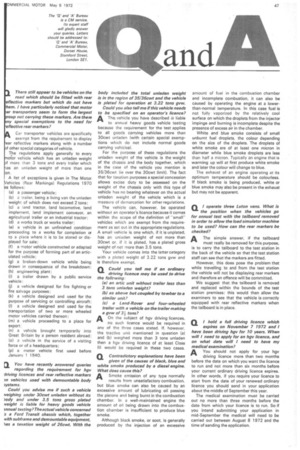Q Contradictory explanations have been given of the causes of black,
Page 49

If you've noticed an error in this article please click here to report it so we can fix it.
blue and white smoke produced by a diesel engine. What does cause this?
ASmoke emission of any type normally
results from unsatisfactory combustion, but blue smoke can also be caused by an excessive amount of lubricating oil passing the pistons and being burnt in the combustion chamber. In a well-maintained engine the amount of oil being drawn into the combustion chamber is insufficient to produce blue smoke.
Although black smoke, or soot, is generally produced by the injection of an excessive amount of fuel in the combustion chamber and incomplete combustion, it can also be caused by operating the engine at a lowerthan-normal temperature. In this case fuel is not fully vaporized by the relatively cool surface on which the droplets from the injector impinge and burning is incomplete despite the presence of excess air in the chamber.
White and blue smoke consists of small unburnt fuel droplets, the colour depending on the size of the droplets. The droplets of white smoke are of at least one micron in diameter while blue smoke droplets are less than half a micron. Typically an engine that is warming up will at first produce white smoke and later the colour will change to blue.
The exhaust of an engine operating at its optimum temperature should be colourless. If black smoke is being produced, white or blue smoke may also be present in the exhaust but may not be apparent,




























































































